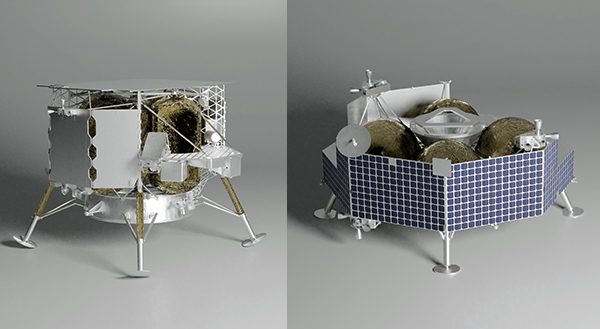NASAPress Releases
Two Spacecraft Developments Well Underway at Astrobotic

| It’s never been a more exciting time at Astrobotic’s 50,000 square foot lunar logistics headquarters. We have two lunar landers currently under construction, and with multiple clean rooms and labs, the capacity to accommodate even more. A future of frequent, affordable lunar missions is at the nation’s doorstep. With all NASA CLPS payloads tested and integrated on Peregrine’s flight decks, the Astrobotic team is closer than ever to being the first lunar landing since the Apollo missions. |
| PEREGRINE MISSION ONE |
 |
| Pictured: Anselm Wiercioch, Mechanical Engineer II at Astrobotic, monitors Peregrine’s battery integration with a flight panel. |
| Coming Soon: Pennsylvania’s First Spacecraft, the Peregrine Lander The Peregrine lunar lander is set to arrive at Astrobotic in early April following payload integration at Dynetics. Its arrival at Astrobotic HQ is heralded by the region’s first ever space conference happening in Pittsburgh, PA from April 20-21. The conference brings together commercial space companies, space industry funders, and space researchers from the private and public sector. During the conference, Peregrine’s flight vehicle (the actual hardware set to touchdown on the Moon’s surface later this year!) will be unveiled for the very first time. Registration is open to the conference participants and includes a tour at Astrobotic’s headquarters for an in-person look at Peregrine. |
| Watch an interview with an Astrobotic spacecraft engineer about Peregrine’s avionics systems. Just last week, Peregrine’s thermal avionics were successfully integrated with its flight decks. |
| GRIFFIN MISSION ONE |
 |
| Pictured: Pete Frye, Mechanical and Fluid Systems Manager at Astrobotic, poses in front of the Griffin Structural Test Model before it is completely surrounded by sound during acoustic testing. |
| Griffin Structural Test Model (STM) Acoustics Testing Complete Last month, the Griffin STM (a one-to-one scale model of our Griffin lunar lander) completed acoustics testing at Experior Labs in California. This test experiment, formally called direct field acoustics testing, simulates the vibrations, frequencies, and decibel levels of a rocket launch to ensure the spacecraft can survive the trip out of Earth’s atmosphere and gravity. Next, Griffin will undergo vibration testing – stay tuned for updates! |
| PLANETARY MOBILITY |
 |
| Pictured left to right: 1) 2U CubeRover Engineering Unit 2) This CubeRover model is one of two units sold to Bosch. Teams will code software to enable CubeRover to autonomously locate a wireless charging station and drive up for a charge. 3) A 3D-printed CubeRover used for stowage and deployment testing. |
| CubeRovers Moving Ahead Astrobotic recently hosted a Critical Design Review for its 2U CubeRover – keep an eye out for updates in the coming weeks! Another CubeRover is currently being upgraded with flight and ground software, along with cameras and avionics, to return to NASA’s Kennedy Space Center in May. |
 |
| The team recently conducted integration testing (above) with lunar landers to prepare for our next CubeRover flight. From rovers to lunar landers to charging systems, our space technologies are designed to work seamlessly together for our customers. |
| SPACE TECH |
 |
| New Tools for Space Domain Awareness The Future Missions & Technology team announced two new small business (SBIR) Phase II awards for both hazard detection (HazNet platform) and LiDAR navigation (ALIN platform).These two ongoing R&D product developments leverage our in house high-performance computing platform coupled with sensing technologies to address the needs of spatial navigation and hazard detection. The two projects, which begin in April, were collectively awarded $1.5 million. |





